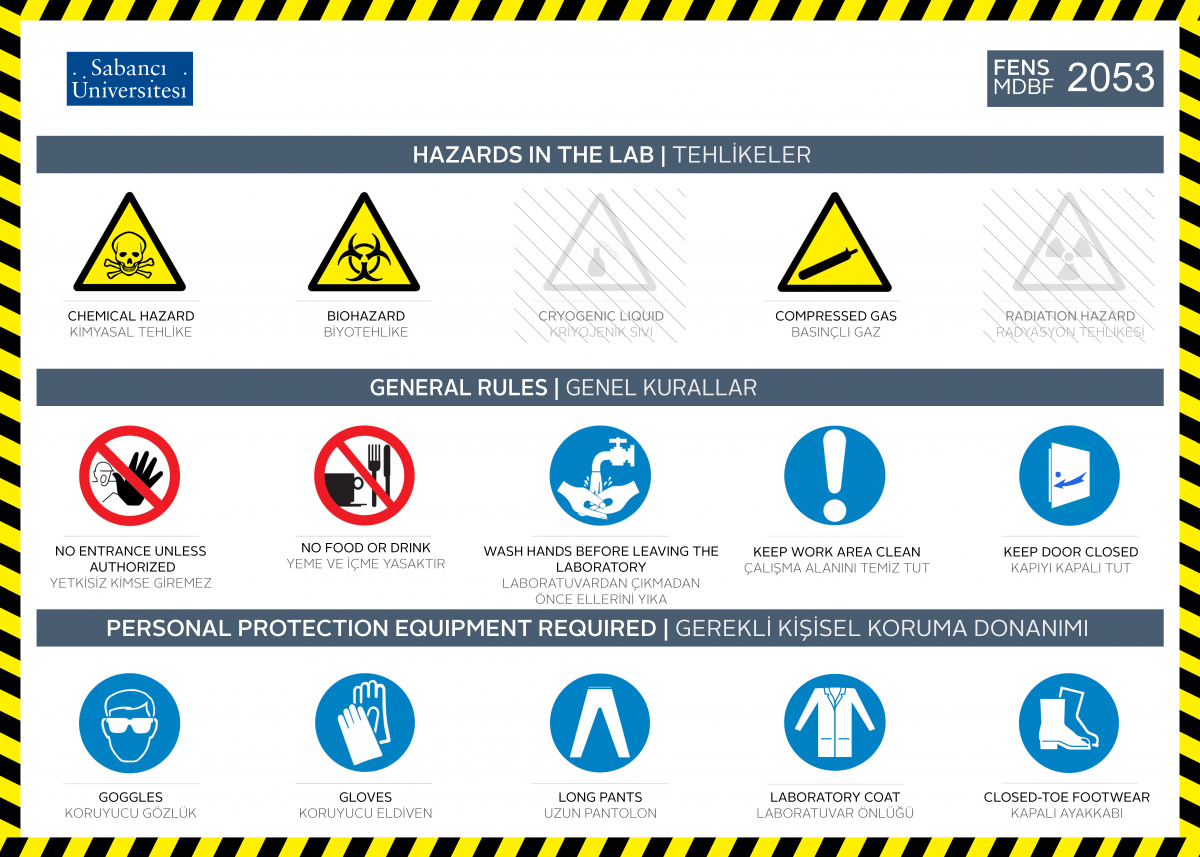The Governmental Safety Regulation requires that the general practice include specific elements and measures to ensure users’ protection in the laboratory. One of these measures is standard operating procedures (SOPs) "relevant to safety and health considerations to be followed when laboratory work involves the use of hazardous chemicals."
SOPs can be presented as stand-alone documents or as supplementary information to a research notebook or research proposals. SOPs ensure that a process is performed meeting required health and safety measures.
An SOP should involve the items listed below:
- The chemicals involved and their hazards.
- Special hazards and circumstances.
- Use of engineering controls (such as fume hoods).
- Required PPE.
- Spill response measures.
- Waste disposal procedures.
- Decontamination procedures.
- Description of how to perform the experiment or operation.
In addition to preparing SOPs for working with hazardous chemicals as a minimum requirement of laboratory standard, LSs are encouraged to develop additional SOPs regarding operation of each piece of equipment present in the laboratory that poses the hazards related to working with the equipment. Some examples to this include:
- Safe use and considerations of lasers.
- Use of cryogenic liquids and fill procedures.
- Use of equipment with high voltage.
An SOP does not need to be written as a long dissertation. It is advisable to refer other sources of information. Some examples of SOPs include:
"Please see page 16 in the operator’s manual that can be found in file cabinet”. “Please review the chemical and physical hazards by reading its SDS (see ChemWatch) before using this chemical. “ Appropriate personal protective equipment can be selected by reviewing lab safety handbook, personal protective equipment section.”
While developing SOPs, laboratories can ask LS and LSS to assist. It is the responsibility of each laboratory to prepare SOPs and to make sure that procedures presented in are adequate to protect lab users who use hazardous chemicals. Due to the complexity of research conducted in a laboratory, LS and LSS are not in charge to prepare SOPs, but help improve them.
Responsible Faculty Member and LS/LSS are responsible for making sure that prepared SOPs are in agreement with health and safety considerations and involve necessary information about hazardous chemicals. They are also responsible for making sure that PPE and engineering controls meet the criteria to prevent exposure. Moreover, Responsible Faculty Member and LS/LSS should ensure that lab users had the necessary training on SOPs prepared.
Safety Signs
All laboratories are equipped with a safety board on every entrance door indicating hazards within the laboratory, general rules and required personal protective equipment (Figure 5.1). Furthermore, specific hazard and emergency area locations are indicated by individual sign boards/labels within the laboratory. All users are obliged to follow the rules and precaution measures indicated on these signs.

Figure 5.1 Safety signboard